We’re a Happy Family: Decoding Kim Ju Ae’s Family Affiliations
November 18 marked the one-year anniversary of Kim Jong Un’s (KJU) daughter, Kim Ju Ae, being in the public eye. That first observed public appearance, and the 19 subsequent events in which she has participated, have raised the question of whether she has been selected as a hereditary successor to the Democratic People’s Republic of Korea’s (DPRK or North Korea) supreme leadership.[1] It is highly probable she has yet to be formally selected as a hereditary successor, and any assumption of power is years, if not decades, into the future. Her influence, given her age and lack of education, probably does not extend to policy at this point in time, but this is a person who has the Suryong’s (great leader) attention and affection, which can affect his mood and personality. Despite lacking a formal writ, position, experience or advanced education, Kim Ju Ae is part of North Korea’s politically active core elite cohort.
As such, it is necessary to examine her with some of the principles and methods with which we assess other DPRK elites. First will be a survey of the little biographical information available and an assessment of her amorphous public profile; second, an examination of her current and developing affiliations in North Korean political culture, shedding light on notable changes and offering insights into potential future leadership decisions. While Pyongyang watchers debate whether a woman can assume the leadership chair or the legitimacy of a fourth-generation power succession, analyzing her background, family dynamics and political affiliations highlights nuanced elements of the succession process, its implications, and how Kim Jong Un is likely already creating the preliminary conditions for Kim Ju Ae or one of her siblings to become the DPRK’s next Suryong.
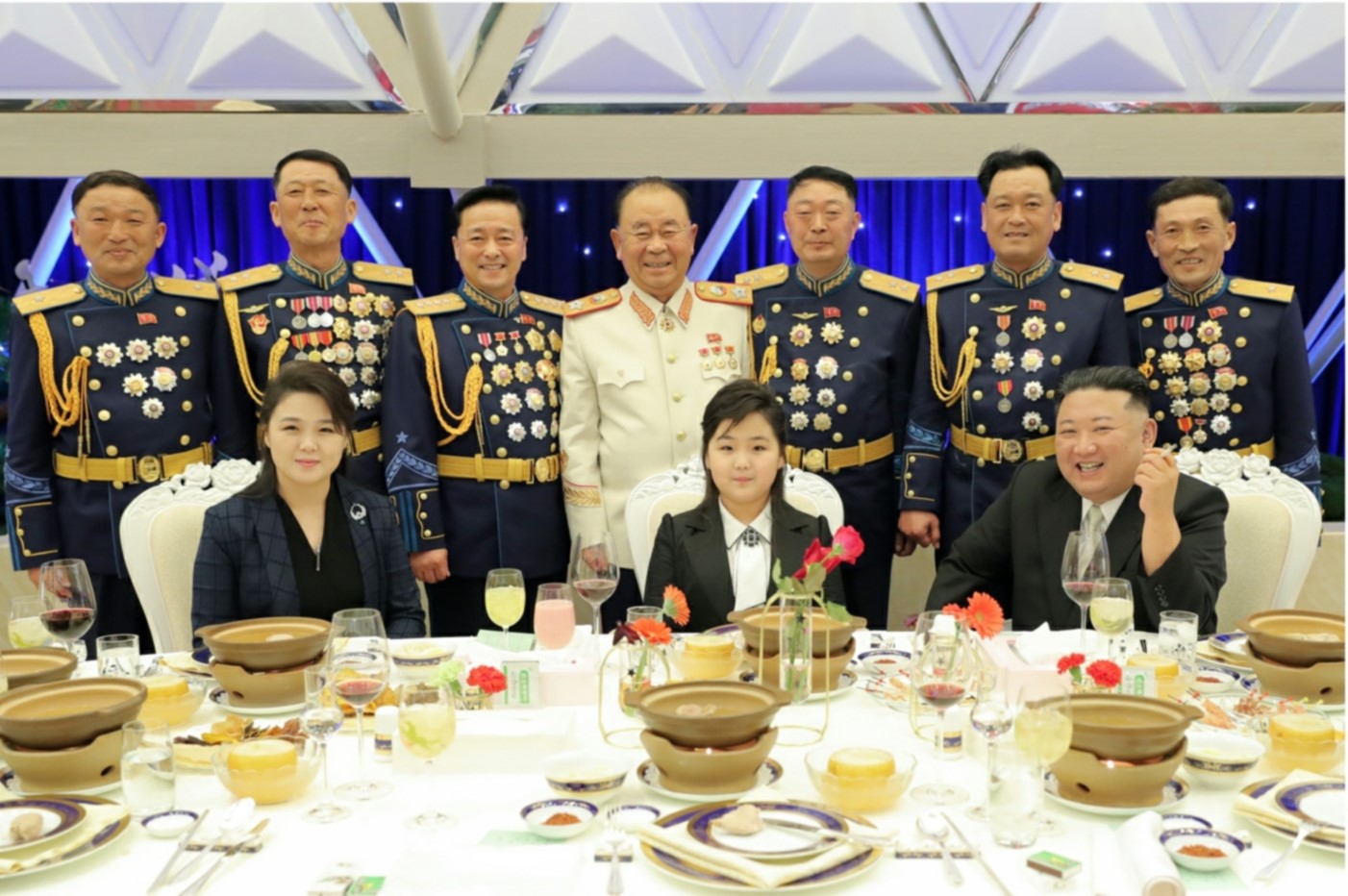
The Beloved Daughter of a Nuclear Family
Kim Ju Ae is estimated to be between 10 and 11 years old, which indicates that she was born between 2011 and 2013. She was first identified by retired US basketball player Dennis Rodman, who met her in 2013 at the Kim family compound in Wonsan. A retired Republic of Korea (ROK or South Korea) National Intelligence Service (NIS) senior manager, citing his own North Korean sources, claims that her name is not “Ju Ae” and that Rodman misheard this. She is the daughter of KJU’s wife and DPRK first lady, Ri Sol Ju. She is a member of the Kim family (Figure 4).Through her mother, she is related to the elite Ri family, of whom defense industry chieftain WPK Secretary and Korean People’s Army (KPA) Marshal Ri Pyong Chol is the most prominent member.[2]
Information about Kim Jong Un’s married life and children initially appeared in 2010 after his mass debut as Kim Jong Il’s (KJI) hereditary successor.[3] The first rumor about KJU was that he had a “big sister wife,” which is to say he married an older woman and that he may have children. Further speculation about KJU’s children appeared in 2011 when Ri Sol Ju appeared during calling hours at KJI’s funeral and when she made her formal public debut as KJU’s wife during the summer of 2012.
The best available current information claims that Kim Ju Ae is one of three children and that one of these children is a son. Sources conflict as to the birth order of the children, so it is not known if Kim Ju Ae is KJU’s eldest child. In March 2023, the NIS told the ROK parliament that KJU’s eldest child was a son kept out of the public eye due to some unknown disability. A retired NIS manager made a similar claim but said that the son was kept out of the public eye because he is “pale and thin,” and his appearance would be unappealing to North Korean citizens.[4]
There is very little other available information about Kim Ju Ae. According to NIS, she likes skiing and horseback riding. She is like most members of the Kim family, who participate in horseback riding and equestrian activities. Her reportedly favorite horse marched during the February 8, 2023 parade marking the foundation of the KPA.
Kim Ju Ae’s public profile has been somewhat amorphous. She alternates between being shown the family’s legacy as a media surrogate for her mother and kind of first lady figure. At her first two observed public appearances, Kim Ju Ae was identified in state media as KJU’s “beloved daughter.” A little over two months later, this expression was modified into “respected daughter,” and state media has alternated between “beloved” and “respected” when reporting about Kim Ju Ae’s attendance at events. Further observation of state media rhetoric around Kim Ju Ae is warranted to see if the difference between “beloved” and “respected” is a stylistic choice or if it carries some significance.
Following the successful satellite launch on November 21, 2023, political education materials were disseminated to party cells by the WPK Organization Guidance Department, which used the phrase “Morningstar of Korea” when talking about the “female general” Kim Ju Ae. This phrase has a high degree of significance in North Korea’s founding folklore; as a partisan fighter, Kim Il Sung was described as the Morningstar of Korea. “Morningstar General” was also a nickname given to Kim Jong Un by his mother, Ko Yong Hui. Some North Korean citizens have thus interpreted the usage of the “Morningstar” expression as an early indication that she is the successor.
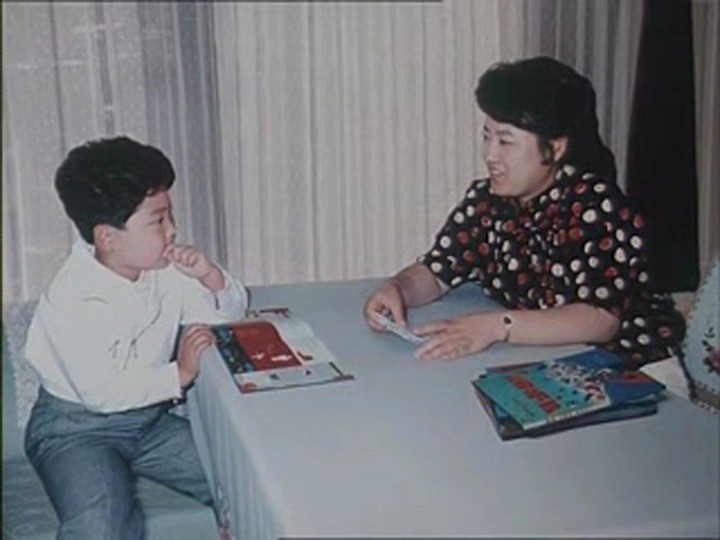
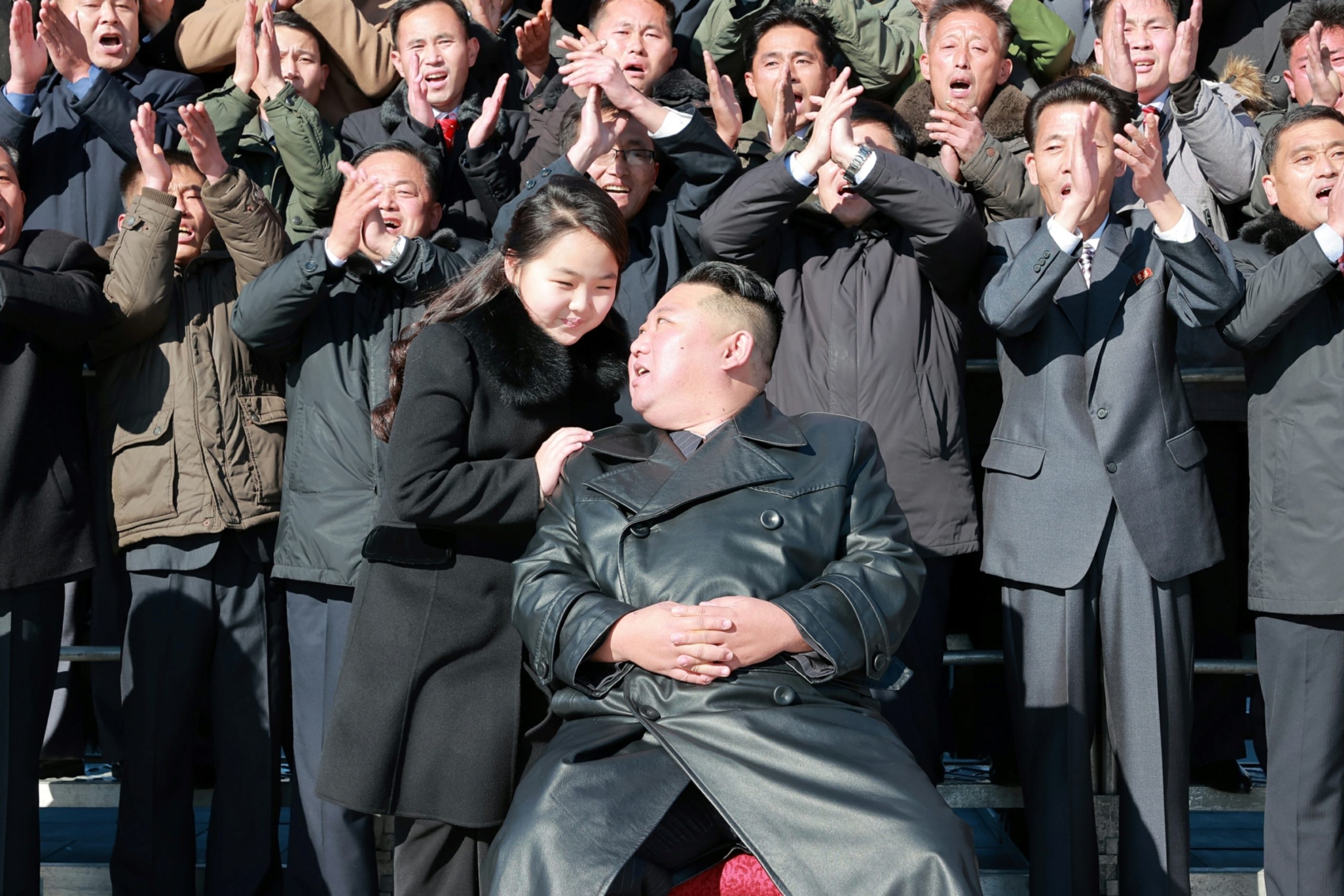
Consanguine Kim Family
Realistically, there are two Kim families. First, there is the “Paektusan family” (Figure 4), which is to say family members who are core elites prominently featured in state media and propaganda. Second, there are the consanguine members of the Kim family, the direct descendants of Kim Il Sung.
Kim Ju Ae is one of Kim Il Sung’s 15 currently known descendants, although there are probably between 20 and 30 grandchildren and great-grandchildren as well.
- Kim Il Sung had six children from his two official marriages, four of whom produced children (Kim Jong Il, Kim Kyong Hui, Kim Kyong Jin and Kim Pyong Il). He also fathered at least two children outside marriage.
- Kim Il Sung has nine known grandchildren (Kim Jong Nam, Kim Sul Song, Kim Jong Chol, Kim Jong Un, Kim Yo Jong, Kim Jung Min, Kim Tong Min, Kim In Kang and Kim Un Song). There are likely several more grandchildren who are not known and an unknown number of great-grandchildren as well.
- Kim Jong Il had at least seven children, five of whom (Kim Jong Nam, Kim Sul Song, Kim Jong Chol, Kim Jong Un and Kim Yo Jong) have produced children.
- Kim Jong Il has three known grandchildren (Kim Ju Ae, Kim Yo Jong’s child born in 2017, and Kim Han Sol, the eldest son of Kim Jong Nam). The overall number of KJI’s grandchildren is likely between 10 and 20, including the other two rumored children of Kim Jong Un.
Kim Jong Un’s “Lessons Learned” About Succession
When KJU was formally designated successor in 2009, KJI’s close aides had several tasks in front of them—they had to expand his public profile, build support among core elites and garner leadership experience for him. If the regime had ironed out these kinks before the KJI-KJU transition in 2011, then perhaps KJU would not have needed to purge former Chief of the KPA General Staff Vice Marshal Ri Yong Ho and KJU’s uncle Jang Song Taek by such brutal and dramatic means.
If there is truly a fledgling effort to establish Kim Ju Ae as a hereditary successor underway, then starting to create a public profile for her at a young age is a sensible decision. It provides a public relations advantage for her over her cousins and other family members and allows more time and effort to be spent building cohesive support for her among North Korean elites long before she would be expected to take power.
That said, if a faction of DPRK elites were to press a succession claim for another member of the Kim family, it would create the added work of trying to introduce that alternate successor to the North Korean population in the future.
In Kim Jong Un’s case, while core elites, particularly in the military, were aware of KJU’s identity and knew he was the favored successor, the hereditary succession picture in the 2000s was not fixed. In 2008, there were several “successor-qualified” candidates.[5] The criteria for this included: 1) being a direct descendent of Kim Il Sung; 2) having elite education and/or experience; and 3) ties to other core elites.[6]
Any of the elites listed in Figure 5 could have mounted a somewhat viable effort to become KJI’s successor by building elite support. While most of those listed were inclined to and eventually supported KJU’s succession, Kim Pyong Il (KJI’s half-brother) and Kim Jong Nam (KJI’s eldest son) could have made a case against the succession of an individual in his 20s.
In 2023, there are fewer “successor qualified” elites (Figure 6). Kim Kyong Hui and Kim Pyong Il are already retired, for instance, and somewhat removed from the social and patronage networks, which are vital parts of the regime’s connective tissue. This leaves only a few elites who could take up the mantle of a hereditary succession process, although all are either older or close to the same age as KJU himself. In terms of future planning, building the profile of a “successor qualified” elite from a young age may be prudent to avoid potential future conflicts between KJU’s children versus the children from other qualified elites his age.
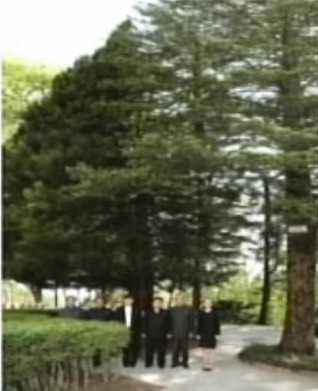
Kim Ju Ae’s Growing Public Profile
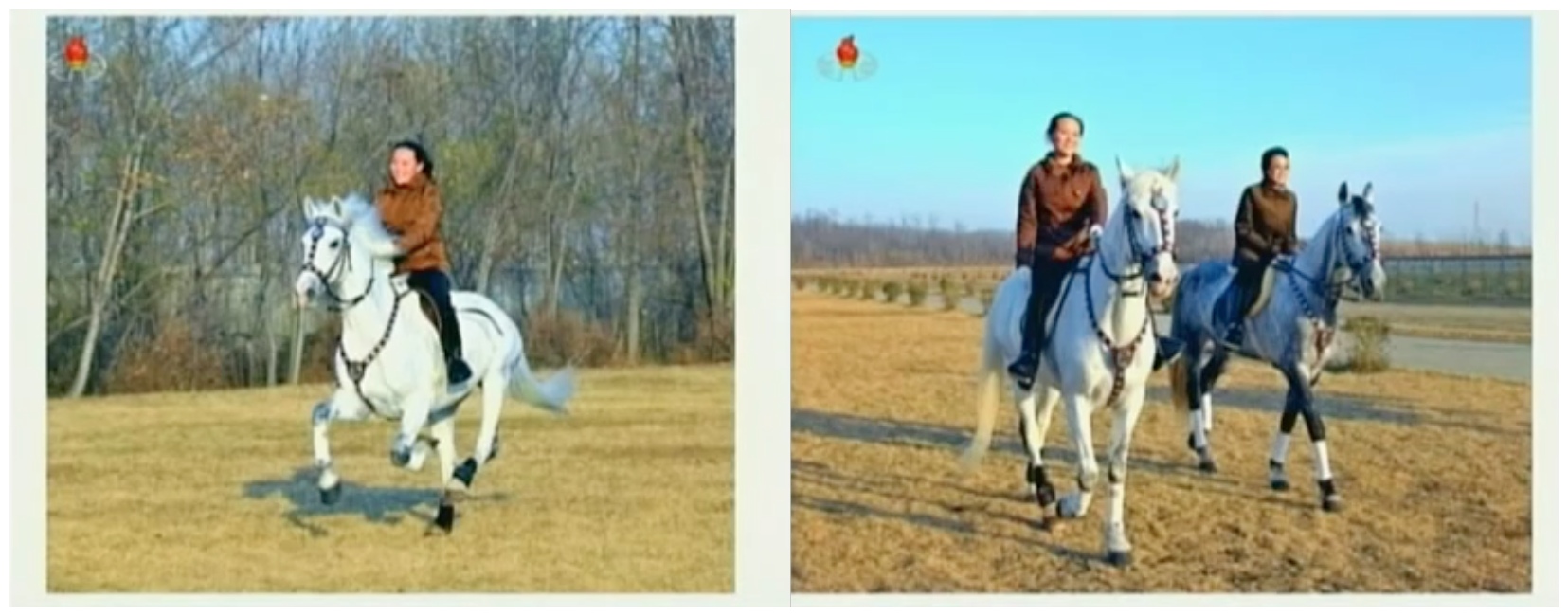
Kim Ju Ae is one of only four of Kim Il Sung’s living descendants to appear in state media during the last five years. The other three are KJU, Kim Yo Jong and KJI’s sister Kim Kyong Hui. This places Kim Ju Ae in the extended Paektusan family. In North Korea’s foundational mythology, the Paektusan family consists of Kim Il Sung, his first wife Kim Jong Suk and Kim Jong Il.
In the DPRK’s official folklore, the Paektusan family merges with other select members of the Kim family—to wit, Kim Kyong Hui, Kim Jong Un and Kim Yo Jong. One major and superficial trait of the protagonists of the Paektusan family is horseback riding. Seeing Kim Ju Ae riding with her father and/or aunt in the future would reinforce her place in the Paektusan line.

The most salient way that Kim Ju Ae has been associated with the Paektusan family legacy is through the public events themselves. Most of the events she has attended can be categorized as related to the KPA and military affairs. She has yet to don a dress uniform, but when we see images of Kim Il Sung’s children and grandchildren, granted, when they were much older, they wore military attire for formal family photographs.
Whether she becomes successor or not, Kim Ju Ae is forming (or compelled to form) ties to the KPA. This is not about winning “military support.” The KPA was founded by Kim Il Sung, and the DPRK links its origins to his partisan guerilla units. With many of her events tied to North Korea’s ballistic missile programs, Kim Ju Ae is being associated with the new, or next, generation of the KPA.
Conclusion
Hereditary succession for North Korea is a long-term concern. Since Kim Jong Un assumed power when he was 27, it is reasonable to expect that Kim Ju Ae and/or one of her siblings will be, at least, holding senior posts by the early 2030s. Paving the way for that to take hold in an incremental and deliberate fashion is a luxury that Kim Jong Un did not have in his own succession story and one that he might be trying to extol to his children now, either focused on Kim Ju Ae or starting with her.
During his daughter’s first year in the public eye, KJU has singled her out among the wider Kim family, bolstered the prestige of his own family line and tied his daughter to the DPRK’s founding mythology, creating a place for her in the political narrative of the country. Kim Ju Ae’s introduction departs from the tradition of keeping the Kim family children hidden until they are older. It is not standard practice, and thus, as it unfolds, this process requires navigating uncertainties and gaps in information, and inherently carries a level of speculative analysis. While her portrayal in state media could be succession-oriented, it may also be a strategy to enhance KJU’s public image as part of the Paektusan line—especially since Kim Ju Ae emerged at a time of great hardship in the country. It could also serve as a means to divert public attention from daunting national challenges and portray KJU as a more compassionate and caring father, reinforcing the value of the Paektusan line.
- [1]
Kim Ju Ae’s presence at a leader’s engagements is not extraordinary. Her father, along with his siblings and half-siblings, routinely attended Kim Jong Il’s on-site visits and inspections. The difference with Kim Ju Ae is that her presence is prominent at the events and is reported in real-time in state media.
- [2]
Sources in the DPRK and Russia identified Ri Sol Ju as a direct relation to Ri Pyong Chol in the mid-2010s. Marshal Ri is either Ri Sol Ju’s grandfather or great-uncle.
- [3]
- [4]
There is a possibility that the desired outcome in publicizing the scant information about Kim Ju Ae’s brother might draw a response from Pyongyang—either in the form of bringing the son to a public event or state media activity. It could also be a trial balloon whereby sketchy intelligence is disseminated into the media in the hopes that a foreign intelligence service will corroborate it or mobilize resources to do so. Additionally, Bringing out small children at North Korean elite events is somewhat rare unless the event involves the Korean Children’s Union or schooling. One factor in KJU bringing Kim Ju Ae to public events and his inspections may be that she has proven a degree of maturity, if not precociousness.
- [5]
One elite who might merit inclusion as successor in 2008 is Kim Yong Ju, Kim Il Sung’s younger brother, who served in several leadership posts, including director of the WPK Organization Guidance Department. In 2008, Kim Yong Ju was 87 years old and, despite holding an honorary position (Honorary Supreme People’s Assembly Vice President), had not been involved in DPRK politics since the 1970s.
- [6]
Omitted in these lists are the two children of Kim Hyong Jin and the two children of Kim Pyong Il, who have spent much of their lives in Europe. While they might present elite education credentials, they have all been largely withdrawn from the conditioning, personality dynamics and social landscape of their elite peers.
